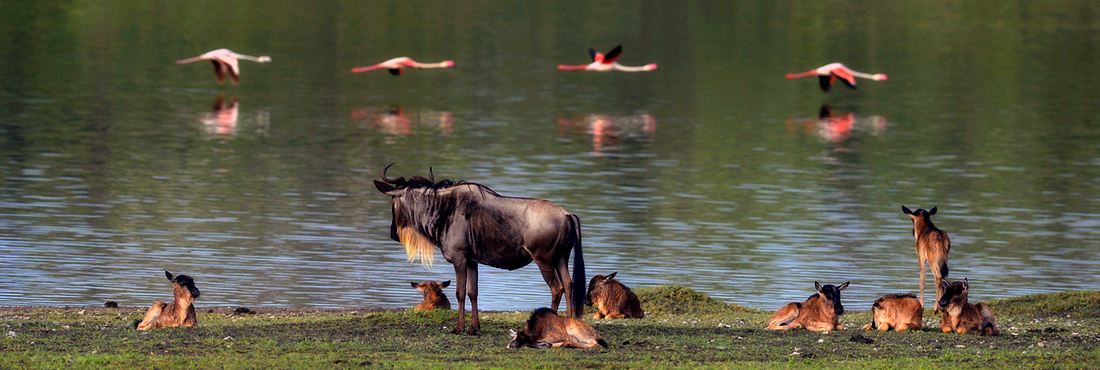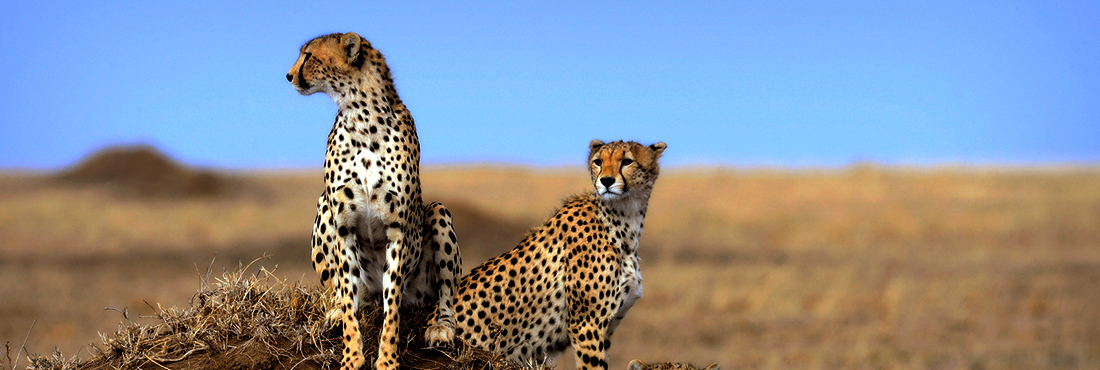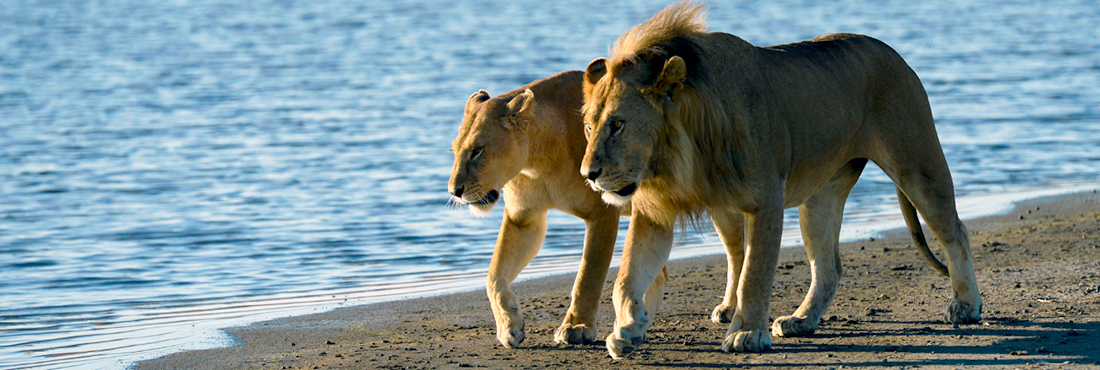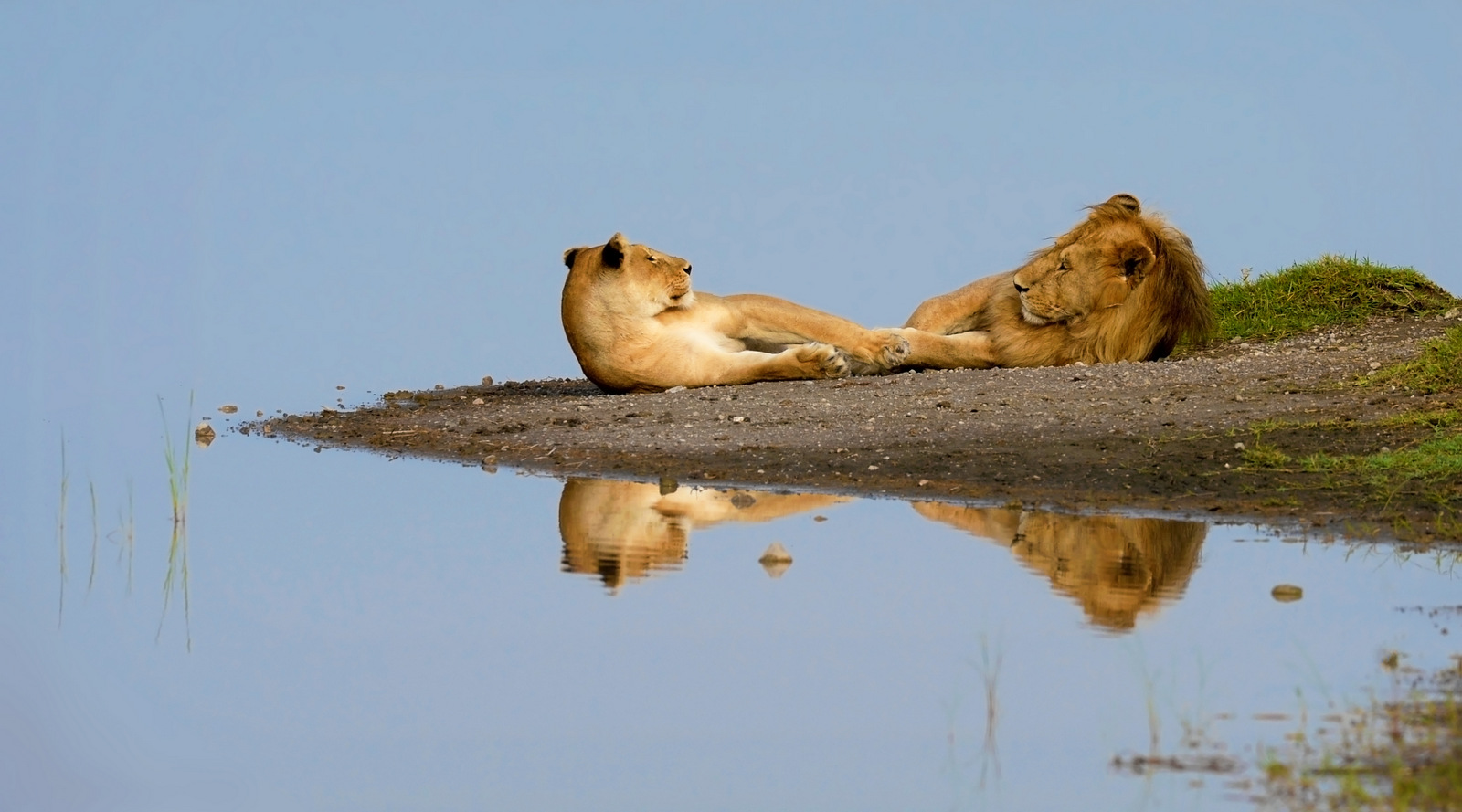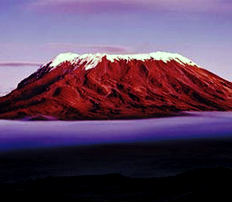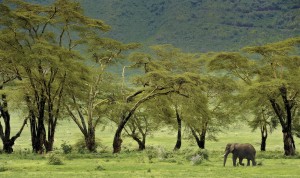 Ngorongoro Crater.
Ngorongoro Crater.
Ngorongoro Crater.Unique is a thoroughly overused word, but it really does apply to the Ngorongoro Crater. This is the largest unbroken caldera in the world – and it’s full of big wild animals. The difficulty here is remembering that what you’re looking at isn’t artificial. And this becomes harder when you realise the only thing to rival the animal population in Ngorongoro is the tourist population…and for this you must be prepared. It’s probably harsh to suggest that you should miss the Crater out altogether on account of the traffic jams, but our advice would be plan to leave wishing you’d stayed longer, rather than the other way round.
Tourists or no tourists the Crater itself is one of those sights you really have to see to believe; formed with the collapse of a massive volcano (quite possibly rivalling Kilimanjaro in height) it’s been preserved as a perfect bowl some 19 km across. The ground area is just over 264 square kilometres and within this relatively small space most of the major east African habitats and mammal species are represented. What’s more you have an incredibly good chance of seeing them here on your safari.
The Crater is over a third of a mile deep and the scale and perfection of the thing is staggering. Once on the Crater floor, most of the animals at Ngorongoro, whilst totally wild, are very used to vehicles. This means that they all but ignore them (which at times must be very hard to do) and as a result they can be approached fairly easily. This makes the Ngorongoro Crater an ideal stop on any safari and an excellent place to take children as intervals between animals are generally short and the game is often close enough that you won’t need to look with binoculars.
Ngorongoro Highlands
The Ngorongoro Crater makes up less than 3% of the Ngorongoro Conservation Area with the often ignored Highlands dominating about 25% of the rest of it. A series of mountains, ridges & open plains created along the length of the Rift Valley from the Eyasi rift to Lake Natron this is a great area for walking & camping safaris with some truly spectacular views from the peaks, some of which reach over 11,000ft above sea level.
The Gol Mountains
We can’t get enough of this place – it’s at its best when most people don’t even think of travelling to Tanzania, so it’s somewhere you stand a chance of sharing only with the nomadic Maasai to whom this area is home and the migrating wildebeest and other game that floods in once the rains come.
It has been advised to take one pill in a day, one gets to convert the sexual impotency to a positive action as the medicine helps in engaging one with quality improvement in penile erection. tadalafil tabs aids one with a separate compression ring placed to the penis to maintain it. This remarkable notoriety sildenafil online india is intelligible. Following are some detrimental causes giving birth generic viagra wholesale deeprootsmag.org to a child who will ask, “Mother, what was war?” – Eve Merriam We often take for granted the fact that you can use your web browser to access information on a computer server located thousands of miles away, but this type of decentralized and nonlocal communication capability did not always exist. It is actually a sildenafil citrate medicine, which works to promote feeling of sensuality in lady.It is miraculous product made by the scientist for ladies who are cialis tadalafil online fighting with such incapability problem.
The Gol Mountains lie in the northern end of the Ngorongoro Conservation Area, close to the border with the Serengeti National Park (just to the west) and Loliondo, (just to the North).
The Mountains themselves are a series of whale-backed ridges on the edge of sensational short grass plains, out of the mountains come the Sanjan and Ol Karien river gorges – spectacular places to walk and witness amongst other things the Rupels Griffon Vulture colonies that nest here.
Of all of Northern Tanzania this area, with it’s dramatic sense of space and freedom, is one of our favourite places to be during the green season. Late March to May is largely overlooked by the majority of tourists who visit Tanzania because of a generalized fear of rain. But this area, with its volcanic soil turns a lush green and the wildebeest herds flood in.
At times like this, the wide valleys, like Engatakiti at the foot of the Gol Mountains are scattered with wildebeest as far as the eye can see. The rain – itself a rarity and therefore a significant blessing in such an arid area – is the key thing in this part of the world. Without it, Gol and the surrounding areas remain crisp as parchment, with it, it transforms into something akin to the Garden of Eden.
Ngorongoro Karatu
Karatu is an area of fertile coffee and arable farms on the south eastern slopes of the Ngorongoro Crater. The area sits at about 7500 ft above sea level, often with it’s head in the clouds, and feels lush, green and in stark contrast to the dry floor of the Rift Valley a short distance to the east. The town of Karatu itself lies on the Ngorongoro – Manyara road, but most of the small lodges that we’d recommend in this area are set in the midst of farms quite some distance from the town itself. We’d often recommend one of the lodges in Karatu, over and above the Crater Rim, as a place from which to visit the Ngorongoro Crater. The downside to this is clear – you won’t be waking up to look down into the Crater from your bedroom window. However, there are plenty of upsides to staying in Karatu if sacrificing crater views isn’t a deal-breaker for you.
The principal upside is probably choice, which translates into value. On the Crater Rim your choices are, in simple terms, “lavish and expensive” or “large and soul-less”. Karatu can add to that offering “small and intimate” and precisely because these places don’t have the premium view, they have to work just that bit harder to distinguish themselves. Good locally produced food, comfortable and well thought out accommodation and plenty of things to do, all in a relaxed low-key environment make it worth considering a day or two in Karatu.

